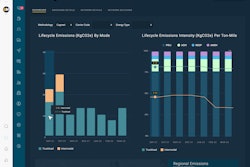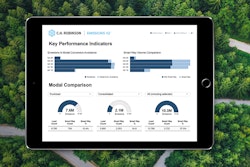
The Security and Exchange Commission (SEC) announced a proposal in late May 2022 that would require companies to comply with climate-related disclosures. While the SEC is still moving forward with those rules, recent delays mean it will be months before we learn what the final proposal contains and whether it will include controversial requirements for Scope 3 emissions disclosures.
What does this mean for shippers?
Shippers can't afford to pause environmental, social, governance (ESG) initiatives while they wait for clarity from regulators and risk falling behind on critical alternative energy research, network data collection and negotiations with more sustainable carriers. Government oversight will come it’s just a matter of when and to what degree. Meanwhile, the European Union is set to tax imports based on greenhouse gas emissions, the recent Inflation Reduction Act includes incentives to build clean-energy supply chains and consumer demand for corporate climate action shows no signs of abating.
With these external pressures building, shippers who haven’t started collecting network emissions data and setting benchmarks have no time to waste.
Consumer pressure for shipping sustainability remains strong
The original draft of the SEC’s climate proposal would have required companies to disclose the risks climate change poses to their operations beginning in 2023. But the requirements stalled after a June 2022 Supreme Court ruling that may impact the agency’s ability to independently enact regulations and a technical glitch that prevented thousands of public comments from being recorded.
Some shippers are breathing sighs of relief at the delays, while others will continue to move forward with plans to track and reduce emissions. Companies in the second group will position themselves as leaders in the ESG space.
Successful businesses don’t make decisions based solely on governmental requirements. Companies answer to consumers and consumers have made it clear that emissions reduction is a top priority. In fact, a 2022 study found that nearly half of global consumers said they have paid an average of 59% more for products with sustainable or socially responsible branding, indicating they’re not turned off by premium prices. Another consumer survey from 2022 found that over half of consumers expect information on the carbon footprint of deliveries to be widely available in five years.
Shippers that take a proactive approach can get ahead of the pack in making measurable strides toward their emissions reduction and sustainability goals and position themselves to comply with future regulations.
A proactive approach to reducing carbon emissions
The criteria for what success looks like in transportation is shifting. Historically, transportation management has been a game of balancing a three-legged stool of cost, carrier capacity and service. But now there’s a fourth pillar to consider emissions reduction.
Transportation teams are uniquely positioned to act on emissions reduction opportunities given their close contact with carriers and comprehensive knowledge of their networks. It’s possible to make progress toward your emissions reduction targets while simultaneously managing cost, capacity and service goals with the following approach.
- Collect data and define benchmarks. You can’t begin taking effective emission reduction action until you determine your emissions baseline. External partners that specialize in transportation data management can help your team collect and clean data that is relevant to your network, enabling your team to gain an accurate view of your current emissions and consistently track progress over time.
- Set goals. Transportation managers and sustainability leaders need to work together to set realistic emissions reduction goals that align with larger business objectives. Many organizations are joining the Science-Based Targets initiative in an effort to ensure transparency and trust by publicly making emissions reduction commitments that align with the 2015 Paris Agreement.
But in many companies, details of these commitments don’t trickle down to the transportation teams positioned to identify and act on emissions reduction opportunities. To make headway, sustainability leaders and transportation managers must collaborate regularly to ensure sustainability considerations are prioritized in everyday decision making.
And in setting goals, it’s important to remember that reducing emissions is a process, not a project. Your team needs the tools to evaluate and report on progress on an ongoing basis, not just during an annual review.
- Take action. Armed with data-driven insights and clear objectives, your transportation team should feel empowered to consider emissions — alongside cost, capacity, and service — in everyday decision-making. Remember that small changes, when taken in aggregate, have an outsized impact on overall emissions. With access to a comprehensive view of your network, your teams can identify opportunities to move the needle in a positive direction daily.
Whether or not the SEC is able to enact its full climate agenda, it’s indisputable 2023 will be a pivotal moment for transportation emissions as companies push to fulfill their public sustainability commitments by reigning in Scope 3 emissions. Consumers, international governments, federal and local leaders have coalesced around carbon reduction initiatives. Companies that do the same will lead the way toward a more sustainable future for the transportation industry.




















